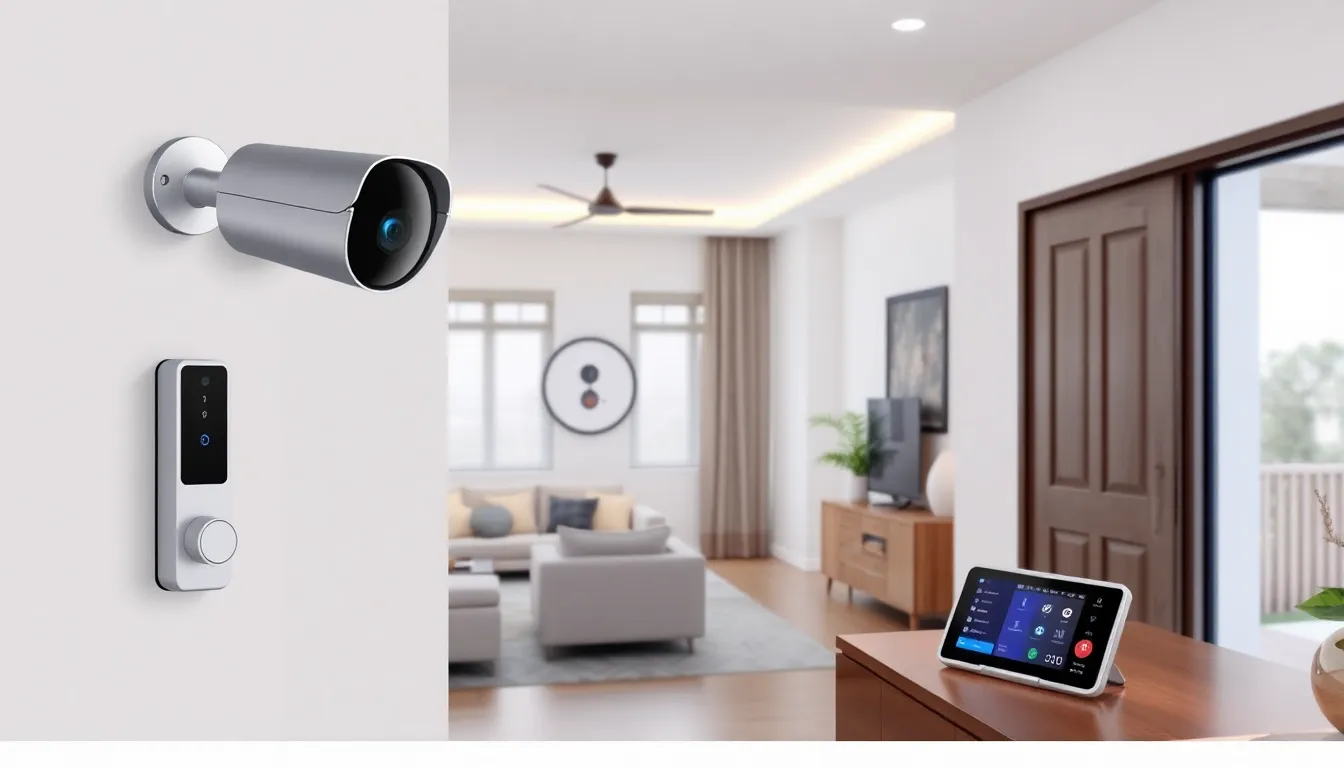In a world where even your toaster might be plotting against you, smart security devices are the unsung heroes standing guard at your digital and physical doorsteps. These clever gadgets aren’t just for tech enthusiasts; they’re for anyone who wants to keep their home safe without turning into a paranoid ninja. With features like real-time alerts and remote monitoring, they make you feel like a secret agent—minus the tuxedo and the shaken martini.
Table of Contents
ToggleOverview of Smart Security Devices
Smart security devices enhance safety for both homes and businesses. These technologies include smart cameras, motion sensors, and smart locks. They utilize internet connectivity for remote access and monitoring, enabling users to oversee their properties from smartphones or tablets.
Real-time alerts keep individuals informed about suspicious activities. For instance, smart cameras can send notifications when they detect movement, allowing for immediate action. Many devices offer two-way audio, enabling communication with visitors or intruders from anywhere, which adds an additional layer of security.
Convenience plays a crucial role in the adoption of these gadgets. Users can integrate smart security devices into existing home automation systems. This integration allows for coordinated security measures, such as automatic lighting triggers when someone approaches the door. Such features not only deter intruders but also provide peace of mind to users.
Affordability has improved significantly, making these devices accessible to a broader audience. Options exist for various budgets, from entry-level models to advanced systems featuring artificial intelligence capabilities. Individuals no longer need extensive technical knowledge to benefit from this technology, thanks to intuitive interfaces and setup guides.
Remote management provides flexibility in personal security. Homeowners can monitor their properties while on vacation, ensuring their homes remain secure during extended absences. The increasing popularity of smart security devices reflects a growing trend toward proactive safety measures in an ever-evolving digital landscape.
Types of Smart Security Devices

Smart security devices come in various forms, each playing a crucial role in enhancing safety and security. These devices cater to different needs, ensuring effective protection for homes and businesses.
Surveillance Cameras
Surveillance cameras monitor properties in real-time. They provide users with live feeds accessible via smartphones or tablets. Many models come equipped with motion detection features that trigger alerts when unusual activity occurs. High-definition video quality enables clear images, ensuring details aren’t missed. Two-way audio adds convenience by allowing conversations directly through the camera. Users can respond to visitors or deter potential intruders easily. Various models offer night vision capabilities, ensuring 24/7 surveillance.
Smart Alarms
Smart alarms serve as essential components in home security systems. These devices detect unauthorized entry and back it up with loud alerts. Many offer integration with mobile apps, allowing remote monitoring and management. Advanced models utilize various sensors, including door/window sensors and motion detectors, to provide comprehensive coverage. Some alarms also send notifications during specific events, such as when children arrive home. Instant alerts allow users to act swiftly in emergencies, greatly enhancing peace of mind.
Smart Locks
Smart locks provide convenience and enhanced security for entry points. With keyless entry options, users can unlock doors using smartphones. Many smart locks incorporate biometric features, such as fingerprint recognition, allowing authorized users seamless access. Some models allow temporary access codes for guests, ensuring security without compromising access. Real-time alerts inform homeowners of lock status changes, enhancing awareness. Battery life can last several months, promoting reliability. Integration with home automation systems further streamlines security measures and daily routines.
Benefits of Smart Security Devices
Smart security devices provide numerous advantages, making them invaluable for modern safety and convenience.
Increased Convenience
These devices streamline security management. Users can control locks, cameras, and alarms from their smartphones. Smart security systems integrate with home automation setups. This integration allows for seamless operation of various devices. Notifications regarding security events arrive instantly, ensuring users stay informed. A key benefit includes keyless entry with smart locks, eliminating the hassle of physical keys. Enhanced convenience empowers individuals to protect their homes and businesses effectively.
Enhanced Safety
Improved safety is a prominent benefit of smart security devices. Surveillance cameras offer real-time monitoring and advanced features like night vision. These enhancements deter intruders and help record incidents. Smart alarms react immediately to unauthorized access, sounding alerts that grab attention. Many devices feature privacy settings to protect users’ data while ensuring safety. Enhanced safety measures put individuals in control of their environment, fostering peace of mind.
Remote Monitoring
Remote monitoring capabilities transform how individuals manage security. Users can access live feeds from cameras on their mobile devices. This ability enables users to check on their properties from anywhere. Alerts can be sent to phones when motion is detected, prompting immediate action. Two-way audio features allow communication with visitors or intruders, providing added security. Remote monitoring ensures users maintain oversight, even when they’re away, making it an essential aspect of modern security.
Factors to Consider When Choosing Smart Security Devices
When selecting smart security devices, various important factors come into play. Ensuring compatibility and integration with existing systems remains paramount for seamless functionality.
Compatibility and Integration
Compatibility with home automation systems simplifies security management. Some devices integrate easily with platforms like Amazon Alexa or Google Assistant, enhancing user experience. For optimal performance, check if the devices work with existing security systems. Interoperability allows users to establish coordinated security measures through one application. Brands that support wider integration options often attract more users. Assessing compatibility early in the buying process leads to smarter purchasing decisions.
Cost and Budget
Cost represents a significant consideration for potential buyers. Prices vary widely, so evaluating budget constraints is essential. Many smart security devices offer tiered options, enabling users to select based on features. Investing in devices with extensive capabilities may save money in the long run. It’s crucial to compare upfront costs against potential savings from reduced insurance premiums. Evaluate long-term value rather than just initial expenses, as higher-quality devices often result in lower maintenance and replacement costs.
Smart security devices have become essential tools for safeguarding homes and businesses. Their user-friendly features and real-time capabilities empower individuals to take control of their security without unnecessary anxiety.
As technology continues to advance affordability and accessibility improve, making these devices available to a broader audience. The integration of smart security systems into existing home automation platforms enhances convenience and overall safety.
With options for every budget and a range of functionalities, investing in smart security devices is a proactive step toward a safer environment. Embracing these innovations not only fosters peace of mind but also helps users stay connected and informed about their properties, no matter where they are.


